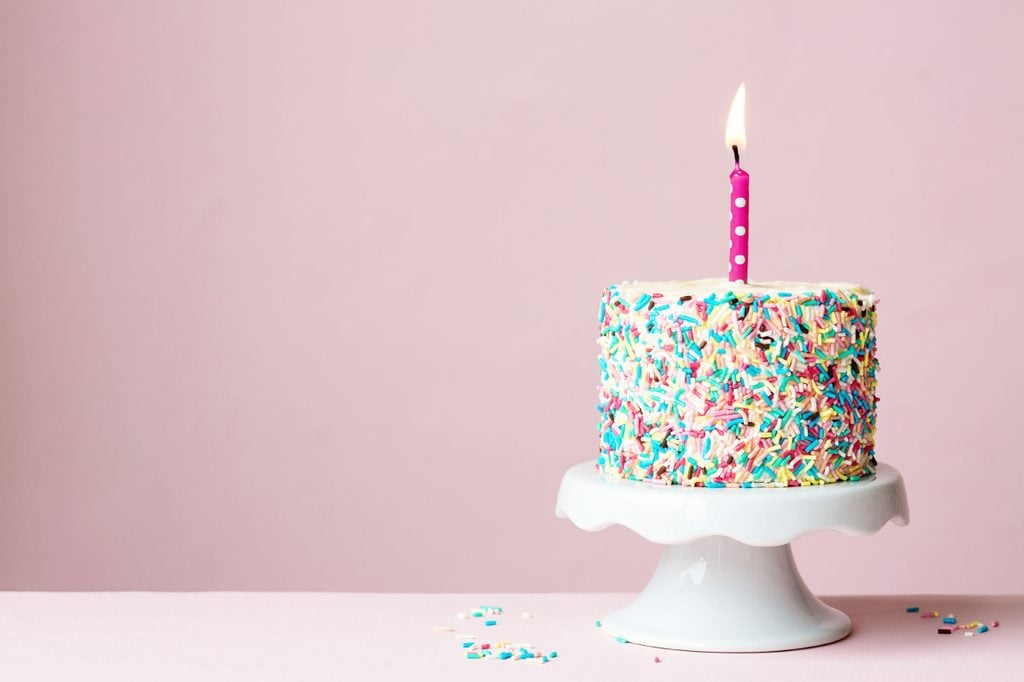13 Things You Never Knew About the “Happy Birthday” Song
Updated: Feb. 13, 2023

At a well preserved 122 years old, "Happy Birthday to You," the most frequently sung English song in the world, has never looked better.
1. “Happy Birthday to You” was originally composed in 1893 as “Good Morning to All” by Patty Smith Hill, a kindergarten teacher and principal in Louisville, Kentucky, and her oldest sister, Mildred Jane Hill, a pianist and composer. Its lyrics went like this:
Good morning to you,
Good morning to you,
Good morning, dear children,
Good morning to all.
2. The song was part of a larger project of the sisters to create simple music that catered to children’s limited abilities. They workshopped songs on Patty’s class so that “even the youngest children could learn with perfect ease,” with Patty writing the words and Mildred setting them to melodies. They published GMTA in their 1893 book, Song Stories for the Kindergarten. Just like us, the sisters loved simple, shareable sentiments. Read our funny birthday quotes to share with anyone in your life.
3. It’s unclear where the birthday lyrics originated, but they appeared with the GMTA tune (unbeknownst to the Hill sisters) first in a piano manufacturer’s 1912 songbook, then in the Hall & McCreary Company’s The Golden Book of Favorite Songs in 1915 and in Robert H. Coleman’s Harvest Hymns in 1924, eight years after Mildred’s death. After The Birthday Song cropped up in the 1931 Broadway musical The Band Wagon and, two years later, the musical As Thousands Cheer, Patty and Mildred’s sister Jessica took legal action. In 1934 and 1935, with the Hill family’s blessing, the Clayton F. Summy Co. published and copyrighted all six versions of Happy Birthday To You (HBTY), crediting Mildred and Patty as the authors.
4. According to some scholars, the tune may be derivative of other 19th-century works. Scholars have drawn comparisons between GMTA and piano company founder Horace Waters’ “Happy Greetings to All” (1858), as well as “Good Night to All” (1858), “A Happy New Year to All” (1875), and others.
5. For years, legal battles raged over the Hill sisters’ ownership of the Birthday Song and whether or not it should be in the public domain. A 2013 class-action lawsuit initiated by a New York filmmaker challenged the song’s copyright and demanded that the current copyright owner return all previous royalties it had collected for HBTY. In May 2015, U.S. District Judge George King was still hearing arguments for Good Morning to You Productions Corp. vs. Warner/Chappell Music. In February 2016, Warner Music finally ended the long-fought battle when it paid $14 million to put “Happy Birthday” into the public domain. In June of the same year, a judge approved it.
6. Before Warner’s 2016 settlement, you couldn’t sing HBTY in a movie without paying a royalty. The Clayton Summy Co. eventually became Birchtree Ltd., which Warner/Chappell Music (Warner Music Group’s music publishing division) acquired in 1988 for $25 million. Before 2016, the company pulled in about $2 million in licensing fees every year just from that song. Movies and television shows typically avoided using the song, but have sprung for it in special cases: While directing Hoop Dreams (1994), documentarian Steve James shelled out $5,000 to include a poignant 18th birthday party scene, using the Happy Birthday song.
7. That clunky, off-brand Happy Birthday Song at your favorite chain restaurant was created to avoid copyright infringement. (The variations at TGI Friday’s and Chili’s Bar & Grill are particularly spirited.) Hear “For He’s a Jolly Good Fellow” at a chain restaurant? That’s because it’s in the public domain.
8. The Happy Birthday Song was used in the first-ever singing telegram when George P. Oslin, the Western Union executive who pioneered the festive greeting, sent one (sung by operator Lucille Lipps) to cherished entertainer Rudy Vallée on his birthday in July 1933 (read about the best festive songs, ranked). Western Union discontinued its singing telegrams in 2006, but relaunched them in 2011 as an e-mail service through which you could have musicians like Snoop Dogg and Timbaland serenade your loved ones.
9. Singing the Happy Birthday Song may actually make birthday cake taste better. According to a study by researchers from Harvard University and the University of Minnesota, indulging in a ritual before eating heightens our enjoyment of the food and helps us savor it.
10. The Happy Birthday Song is arguably the most frequently-sung English song in the world, giving “For He’s a Jolly Good Fellow” and “Auld Lang Syne” a run for their money. If you hear this song a lot in September, there’s a reason.
11. Igor Stravinsky’s “Greeting Prelude,” a 45-second orchestral piece that he composed for conductor Pierre Monteux’s 80th birthday in 1955, might sound a bit familiar: Though it deconstructs the song’s notes and leapfrogs across octaves, the spirit and melody of the Birthday Song ring through loud and clear. Aaron Copland’s “Happy Anniversary” is also based on the tune, and was played when President Nixon presented the Medal of Freedom to Philadelphia Orchestra conductor Eugene Ormandy.
12. The anniversary of GMTA’s composition is widely celebrated as June 27, Mildred Hill’s birthday. Mildred, who would be 156 this year, shares her special day with Helen Keller, Ross Perot, and Vera Wang.
13. Mildred and Patty Smith were honored posthumously at the 1996 Songwriters Hall of Fame award and induction ceremony with the Towering Song Award, which celebrates songs with lasting cultural impact. The “Happy Birthday” song isn’t the only everyday thing you could stand to learn about, take a look at 46 more weird facts most people don’t know.